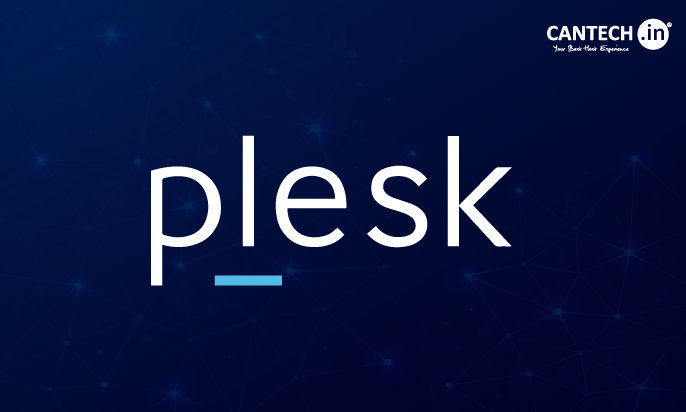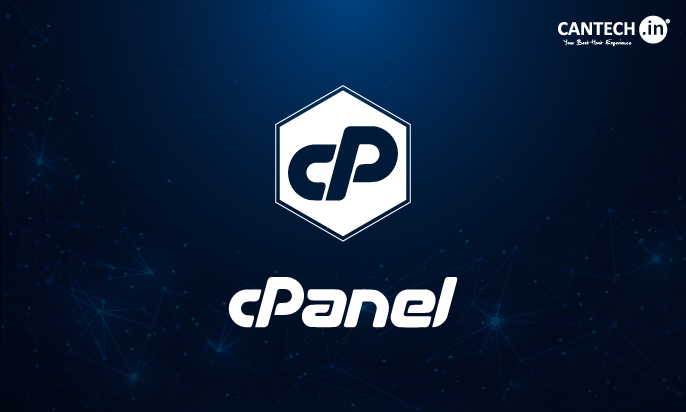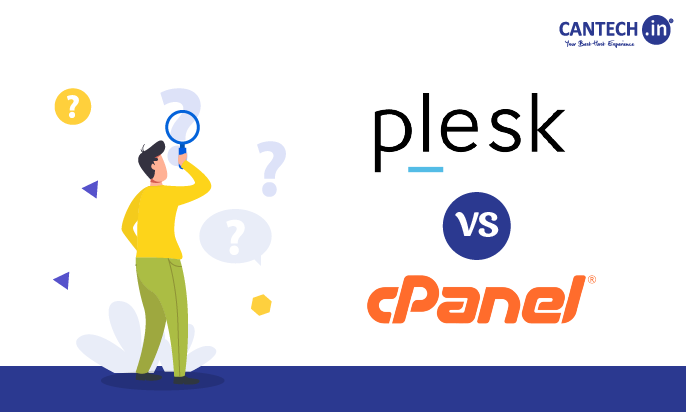Most people, individuals, businesses, and bloggers in this digital world almost have a website. It is not as easy as just designing a site, you have to create and run one as well. If only there was a control panel that could assist in your tech work for your website so that you don’t have to worry about it being up and running and clear of problems. A Control Panel is just like an airplane cockpit equipped with all the necessary gadgets to identify an airplane and move it from one place to another; only that here it’s a control panel as a web service that enables simple website management.
This can be painful for those having no experience in managing a server or a hosting account. These may sound like exquisitely complex concepts such as DNS, FTP and more. These tasks are much simpler using a control panel. From setting up an email service to adding not only any software, everything can be done elegantly without knowing the computer system at all. In essence, this means that with a control panel, taking control of a server will be as easy as having your personal server boss on your website.
We will run through our guide on the difference between a control panel and what one is needed for when it comes to web hosting as well as on what are the two most popular control panel services in the world on cPanel and Plesk. If you are just getting into it or planning on changing the hosting provider, then knowing control panels will be vital to make the right decisions and gain the control of your online existence. Let’s dive in!
What is a Control Panel?
Definition and Purpose
Control panels play an essential role in the world of web hosting. They are user friendly interfaces which hosting providers have given so as to manage your hosting account and servers. A control panel is like your command center—you go to a place where you can do many things and don’t need to know how to be a technology expert.
This central hub lets you create email accounts, dial into databases, install new software, monitor how your website is doing. This enables people without any knowledge of server management to use it.
Having no control panel means you have to rely on command line tools and have at least some idea of server administration. It can be pretty daunting if you’re not a seasoned programmer in tech or if it’s not a discipline you’re as familiar with as you’d like to be. This gap can be bridged with control panels that allow you to control your hosting execution environment without having to master complicated server ‘commands’.
Why Do You Need a Control Panel?
Ease of Use
The GUI based control panels are designed so that the management of the server can be performed by even a novice user. With complex command line instructions to deal with, users can easily navigate through the menus and icon to control the hosting environment. It is easier to set up correct settings, monitor performance and modify if the necessity occurs without technical expertise.
A well organized layout helps control panels to take care of the important tasks of file management, email setup or even simple software installation. Users can have access to the built in domain management, domain settings and SSL certificate installations from one central dashboard. This helps to save a lot of time on routine administration as well as avoid errors.
Moreover, most control panels come with step-by-step guides, tooltips, and customer support options to assist users. Whether you are a beginner setting up your first website or an experienced administrator managing multiple domains, a control panel offers an intuitive experience. This ease of use allows businesses to focus on their core operations without being hindered by technical difficulties.
Time-Saving
Automation saves the time several repetitive tasks need for the users. Setting up an email account, setting up a database and FTP access could be done with a few clicks. With automation, manual coding and technological expertise is no longer necessary, and the time is therefore saved and probable errors minimized.
Control panels do have one of the most useful features that is the one click installers. These are very easy to use tools to deploy software like WordPress, Joomla or some other content management systems. This feature is invaluable for businesses and individuals who want to launch websites without the need for much IT support.
Additionally, control panels give you the opportunity to set up scheduled backups, automatic updates, or patching and those things that can run unattended. It means you don’t have to manually intervene with maintaining your servers and sites in the first place: your websites and servers are secure and up to date. As long as these critical tasks can be automated, control panels remove the decision-making for website owners and allow them to concentrate on what really matters, namely generating content, promoting their business, and encouraging growth.
Accessibility
There is nothing worse than having to modify files in the control panel because it can be a very painful process. But with modern day web based control panels there is nothing easier than managing your hosting account. And these user- friendly interfaces means that you can take care of your hosting needs from any place with internet access. Whether at your desk, a coffee shop, halfway around the world, you can just open an internet browser and just take care of business. Most importantly, this flexibility is very useful for the companies, which need to keep an eye on their servers and quickly solve the issues.
Most hosting providers cater to the freelancers who don’t sit still too much as well, offering apps or mobile optimized interfaces for this sector. Taking that a step further, this implies you can monitor your websites as well as make indispensable changes directly from your smartphone. So you need to update DNS settings or restart a server or fix some technical glitch?
Don’t worry, you can break free from your desk and handle everything. In addition, this remote management makes it easy to boost productivity and helps minimize downtime. One other great feature of modern control panels is the multi user access. This gives the businesses the ability to create more than one account for team members with different permission levels.
Security
Think of control panels as your website’s security guard. They come equipped with essential tools like firewalls, SSL certificate managers, and malware scanners. These features work together to keep your sensitive data safe, block unwanted visitors, and make sure you’re following the best security practices.
One of the most useful aspects of control panels is how they manage user access. You can set up strong passwords, add an extra layer of security with two-factor authentication (2FA), and even control who can access your site based on their IP address. It’s like having a bouncer at the door of your digital club, keeping the troublemakers out and reducing the risk of brute-force attacks.
Control panels also help you stay on top of security updates and patches. Many of them can even update automatically, which is great for busy website owners. This means you’re less likely to fall victim to attacks that target outdated software.
Scalability
The more traffic your website gets and the more the resource demands on your website, as your business grows, you’ll need to be able to accommodate these. Scaling hosting resources is simple with control panels as one can scale the resources by upgrading plans, adding storage, etc. or by optimizing server performance. The technical personnel do not require expertise in programming, IT, or resource usage, as users can monitor resource utilization and implement adjustments accordingly.
Scalability is vital for eCommerce websites and businesses that have seasonal traffic spikes. As part of these control panels, there are features such as load balancing, caching and cloud integrations that give a business the freedom to expand on its hosting infrastructure without hassle. This guarantees fast and responsive websites for users during higher traffic.
In addition, there is control panel support for the management types of a single domain, subdomain and a database in a single interface. A control panel provides greater simplicity to the scaling process whether a business is launching a new product, spreading over different markets, or managing multiple websites. This business flexibility helps businesses to grow the business with no operations issues.
Types of Control Panels
Control panels can be broadly categorized into two types:
Web Hosting Control Panels
Web hosting control panels are essential tools for anyone managing a website, from bloggers to business owners. These user-friendly interfaces simplify the often complex world of web hosting, making it accessible to people with varying levels of technical expertise.
Popular options like cPanel, Plesk, and DirectAdmin offer a range of features that streamline website management. With these tools, you can easily set up email accounts, manage domains, and install applications such as WordPress without needing to dive into complicated backend processes.
One of the biggest benefits of using a web hosting control panel is how it simplifies typically challenging tasks. For example, you can install SSL certificates, set up FTP access, and keep an eye on your website’s performance through a straightforward, point-and-click interface. This means you don’t need to be a tech whiz to keep your site running smoothly.
Server Control Panels
Server control panels are essential tools for system administrators and IT professionals who need to manage entire servers, not just individual websites. These powerful interfaces offer deep control over server resources, allowing admins to fine-tune security settings, handle multiple users, and optimize overall performance. Tools like Webmin and VirtualMin provide advanced features for remote server management, making them crucial for businesses running dedicated or VPS hosting setups.
While web hosting control panels prioritize user-friendliness, server control panels shine in their flexibility and customization options. Administrators can adjust server configurations with precision, implement robust firewall rules, and keep a close eye on resource usage in real-time. This level of control is invaluable for maintaining peak server performance, enhancing security measures, and ensuring reliable operations.
Introduction to cPanel
What is cPanel?
cPanel is a widely used web hosting control panel all over the world. It is famous for being easy to use and feature-packed and is loved by beginners as well as experienced users. cPanel is predominantly used on Linux servers and is well-supported by hosting companies.
Key Features of cPanel
- File Management: Upload, download, and organize files with ease using the File Manager.
- Email Management: Create and manage email accounts, set autoresponders, and spam filters.
- Database Management: MySQL and PostgreSQL databases are supported, with tools such as phpMyAdmin for convenient management.
- One-Click Installations: Install popular scripts such as WordPress, Joomla, and Drupal with minimal effort.
- Security Tools: Supports SSL/TLS management, IP blockers, and password-protected directories.
- Backup and Restore: Schedule automatic backups and restore your site with ease.
- Analytics: Track website traffic, bandwidth usage, and error logs.
Pros and Cons of cPanel
Pros
- User-friendly interface.
- Extensive documentation and community support.
- Wide range of features for website management.
- Compatible with most hosting providers.
Cons
- Only available on Linux-based servers.
- Licensing costs can be high for hosting providers, which may be passed on to customers.
- Limited customization options for advanced users.
Introduction to Plesk
What is Plesk?
Plesk is also a popular web hosting control panel, and it is famous for its great flexibility. While cPanel, however, is limited to Linux and Windows servers, Plesk can operate on both platforms, making it a leading choice for those who need flexibility in the hosting system. Plesk is also widely utilized by hosting providers and has many features for managing websites, domains, and servers.
Key Features of Plesk
- Multi-Platform Support: Support for Linux and Windows servers.
- Website Management: Easy management of multiple websites and domains from a single control panel.
- Application Installation: One-click application installation of over 100 applications, including WordPress, Joomla, and Magento.
- Security Features: SSL/TLS management, firewall configuration, and malware scanning.
- Automation Tools: Automate routine tasks like backups, updates, and monitoring.
- Developer-Friendly: Docker, Git, and staging environment support for developers.
- Extensions: Extend functionality with a vast number of extensions available on the Plesk Marketplace.
Pros and Cons of Plesk
Pros
- Compatible with Windows servers.
- Modern and intuitive interface.
- Strong security features.
- Extensive support for developers.
Cons
- Can be overwhelming for beginners due to its advanced features.
- Licensing costs may be higher compared to other control panels.
- Some users may find the interface less intuitive than cPanel.
cPanel vs. Plesk: A Comparison
User Interface
- cPanel: Known for its simple and straightforward interface, cPanel is ideal for beginners. The layout is clean, and features are organized into sections for easy navigation.
- Plesk: Plesk offers a more modern and sleek interface, but it can be more complex due to its advanced features. It’s better suited for users with some technical knowledge.
Ease of Use
- cPanel: Easier for beginners to get started with, thanks to its intuitive design and extensive documentation.
- Plesk: While user-friendly, Plesk’s advanced features may require a steeper learning curve for beginners.
Compatibility
- cPanel: Only compatible with Linux-based servers.
- Plesk: Compatible with both Linux and Windows servers, offering greater flexibility.
Pricing
- cPanel: Licensing costs can be high, especially for hosting providers, which may result in higher hosting fees for customers.
- Plesk: Also comes with licensing costs, but its multi-platform support may justify the price for some users.
Security Features
- cPanel: Offers robust security tools, including SSL/TLS management and IP blockers.
- Plesk: Provides advanced security features like firewall configuration and malware scanning, making it a strong choice for security-conscious users.
Support and Community
- cPanel: Has a large and active community, with extensive documentation and tutorials available.
- Plesk: Also offers strong support, with a wide range of extensions and a dedicated support team.
How to Choose the Right Control Panel for Your Needs?
Factors to Consider
- Operating System: If you are using a Linux server; cPanel is a good option as a server operating system. Plesk is the way to go for the Windows servers or multi-platform environments.
- Advantages: Plesk or cPanel may offer different conveniences that are attractive to particular people depending upon their level of experience with controls and features.
- Licensing Costs: These should be considered in your budget related to the licensing costs and how they may affect your hosting fees.
- Security: You should also evaluate what security is provided by the program, something that is often overlooked by many developers.
Setting Up and Using a Control Panel
How to Access cPanel
- Log in to your hosting account.
- Navigate to the control panel section (usually labeled “cPanel”).
- Enter your username and password to access the dashboard.
How to Access Plesk
- Log in to your hosting account.
- Navigate to the Plesk control panel.
- Enter your credentials to access the dashboard.
Common Tasks You Can Perform
- Creating Email Accounts: Set up professional email addresses for your domain.
- Installing Applications: Use one-click installers to set up WordPress, Joomla, or other CMS platforms.
- Managing Databases: Create and manage databases using tools like phpMyAdmin.
- Backing Up Your Website: Schedule automated backups to protect your data.
- Monitoring Performance: Use analytics tools to track website traffic and performance.
Final Thoughts
In terms of using control panels for managing your web hosting, the cPanel and Plesk control panels are both good options, but each one is aimed at different types of users and different types of environments. In the end you will find the best choice depends on what you need and want.
Having an understanding of the factors and rewards for each control board will enable you to make educated choices in the direction of your own web hosting encounter.
FAQs
1. What is the purpose of a web hosting control panel?
A web hosting control panel is designed to simplify the management of your hosting account and server. It provides a user-friendly interface to perform tasks like creating email accounts, managing files, installing software, and monitoring website performance. Without a control panel, you’d need advanced technical skills to handle these tasks using command-line tools.
2. Is a control panel necessary for managing a website?
While it’s possible to manage a website without a control panel, it’s highly recommended, especially for beginners. A control panel saves time, reduces the risk of errors, and makes complex tasks like database management or SSL installation much easier. For most users, a control panel is an essential tool for efficient website management.
3. What’s the difference between cPanel and Plesk?
cPanel is a Linux-based control panel known for its simplicity and ease of use, making it ideal for beginners. Plesk, on the other hand, supports both Linux and Windows servers and offers more advanced features, catering to developers and users with specific technical needs. Both are powerful tools, but the choice depends on your server environment and skill level.
4. Can I switch control panels after choosing a hosting provider?
Switching control panels depends on your hosting provider and server setup. Some providers allow you to switch between cPanel and Plesk, but it may involve additional costs or technical adjustments. It’s best to choose a hosting provider that offers the control panel you prefer from the start to avoid complications later.




